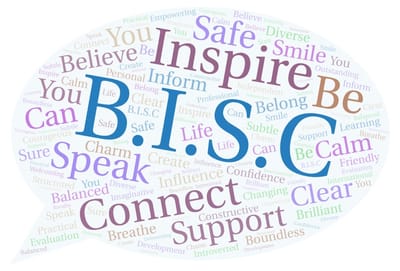Key skills to speaking

When we speak, we aim to:
• inform;
• convince;
• persuade;
• entertain;
• stimulate;
• impress; and
• motivate
In order for communication to take place there needs to be a transmitter and a receiver, a speaker or presenter, and an audience. Both elements are essential in the communication process and a continuous interaction between the two elements needs to be maintained for the communication to be effective, for the presenter to be successful and for the audience to be satisfied.
BISC focuses on the presenter’s physical delivery of the presentation, whilst also focusing on the content of the speech or presentation, the audience and the environment in which the presentation is being delivered.
It is a fact that positive body language and paralanguage (voice, stance, eyes), when pleasant and attractive and interesting to look at, will also increase the listening attention of the audience. Good presentation is of the utmost importance – people will decide whether they want to listen to you by how you look.
There are three main aspects that are important for a successful delivery:
- Image – to capture the listening of the audience
- Vocal effectiveness – to control listening of the audience
- Body language – the double slam – to hold the full attention of the audience up to the final word.
This forms the three-step approach to any presentation, speech or report. For a small audience,
the first and the second steps will be adequate, but for a larger audience, all three steps need to be present for a successful presentation.
Apart from a good image, the following eight techniques need to be mastered in order to be in
control of our presentation and to communicate with confidence:
- pace;
- facial expression;
- pitch;
- hand gestures;
- projection;
- stance;
- pause; and
- eye contact.
Key categories of speech
- To Entertain
- To Inform
- To Inspire
- To Persuade
- Impromptu Speaking
- Research Speech
- Current Events Speech


